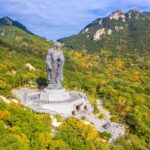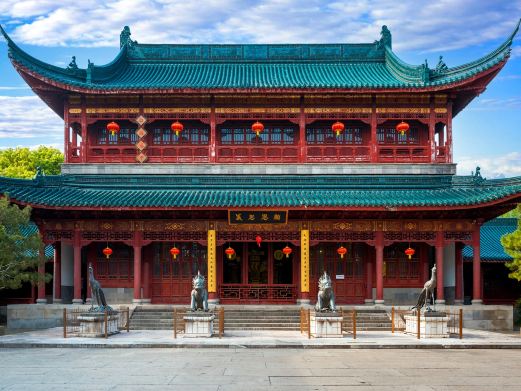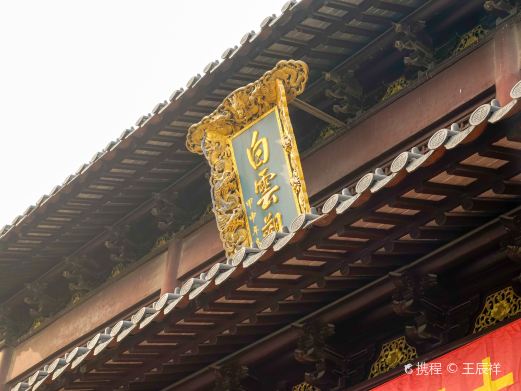Located to the east of Zizai Tian in Haining Zen Temple, once known as the Eastern Bamboo Garden and now recognized as the Qiu Tree Forest, this area is a significant natural scenic spot in Hua Guo Mountain. The Qiu tree, a precious and rare species in China, belongs to the Catalpa family and is a deciduous arboreal tree with triangular-ovate or elliptical leaves. Its white corolla is adorned with purple spots, resembling the phoenix tree, with the distinction that the phoenix tree has larger leaves while the Qiu tree has smaller ones.
Known as ‘big leaf phoenix tree, small leaf Qiu’. The wood of the Qiu tree is dense and the tree trunk is straight, making it one of the fine timbers used in China from early times. During the Han and Tang dynasties, a large number of Qiu trees grew naturally on Hua Guo Mountain, suitable for construction and shipbuilding. Archaeological findings show that Han dynasty tombs unearthed in Lianyungang were coffined with Qiu wood. Qiu wood is particularly resistant to decay, often found in tombs where the bodies have long since turned to dust, yet the Qiu wood coffins remain as good as new. Over two thousand years, the Qiu tree has suffered from the ravages of war, nearly becoming extinct. After the founding of the People’s Republic of China, the mountains were closed for afforestation, and the mountainous landscape was quickly restored. Meticulous cultivation resulted in a Qiu tree forest covering dozens of acres. With its robust and majestic presence, the Qiu tree forest adds exceptional charm to Hua Guo Mountain. Open all year round, accessible 24 hours a day.Qiu Tree Forest
Located to the east of Zizai Tian in Haining Zen Temple, once known as the Eastern Bamboo Garden and[...]








